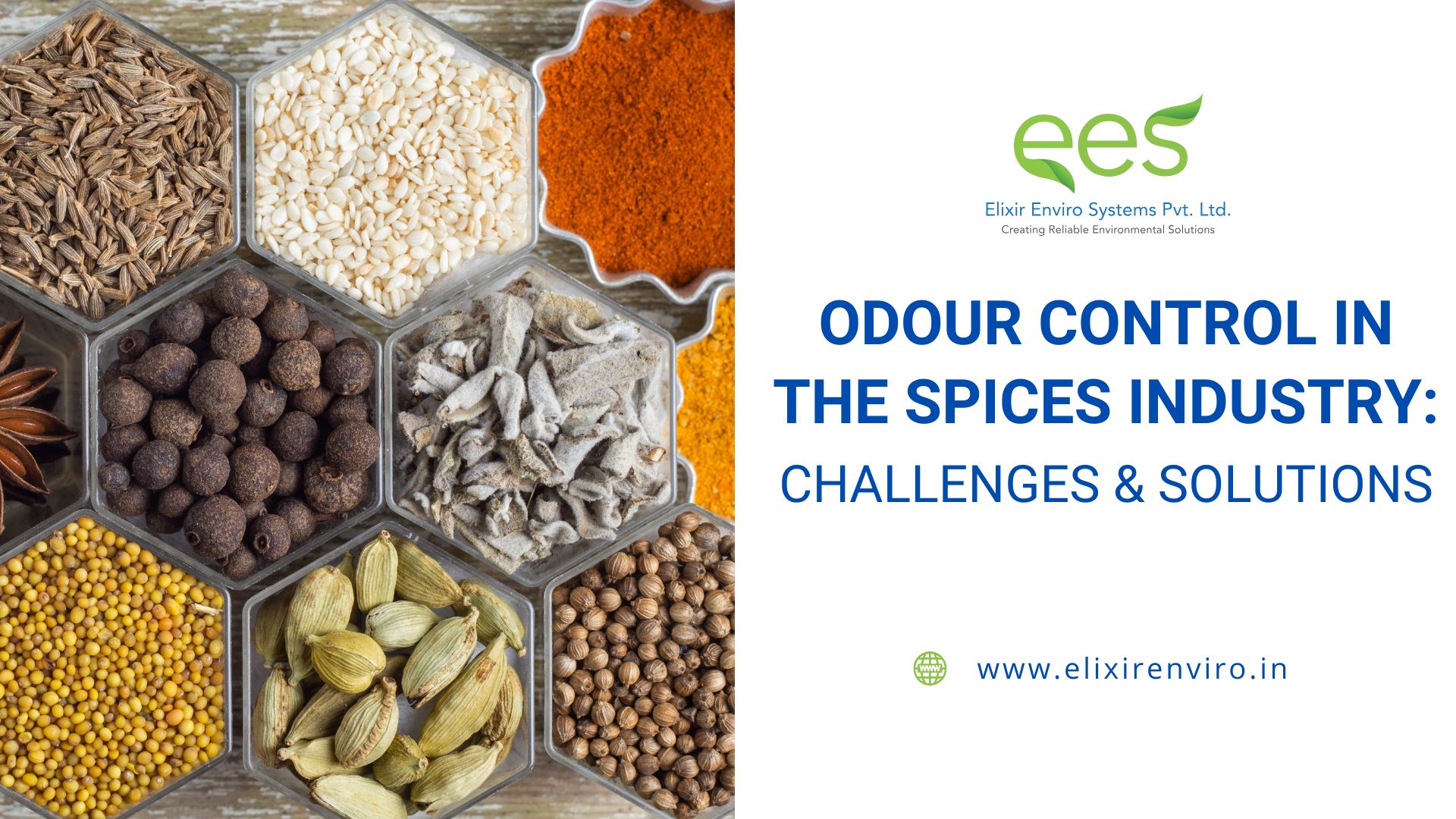Odour Control in the Spices Industry: Challenges & Solutions
The spices industry is a vital sector in food processing, contributing to the global demand for flavouring and seasoning. However, it also faces a significant challenge—strong odour emissions. The pungent aromas released during spice grinding, roasting, and packaging can create discomfort for workers, affect air quality, and lead to complaints from nearby communities. Effective odour control measures are essential for compliance with environmental regulations and maintaining a healthy workplace.
Understanding the Sources of Odour in the Spices Industry
Spices, due to their natural volatile compounds, produce strong aromas, especially during processing. The main sources of odour emissions include:
1. Grinding & Milling
The mechanical process of grinding spices like chili, pepper, and turmeric releases fine dust and aromatic compounds into the air, contributing to odour issues.
2. Storage & Handling
Spices contain essential oils and volatile compounds that permeate storage facilities, causing persistent odours, especially in humid environments.
3. Drying & Roasting
Heat treatment of spices intensifies their natural aromas, leading to the release of strong odour emissions that can travel far beyond processing areas.
4. Waste & By-products
Rejected spices, dust, and other organic waste from processing can decompose and release unpleasant odours if not properly managed.
Spice Extraction Facilities and Processes
Some spice industries also have extraction facilities to derive essential components from raw spices. These processes are used to obtain concentrated spice extracts that are widely used in food, pharmaceuticals, and cosmetics.
Extraction Processes
- Solvent Extraction: Organic solvents like ethanol or hexane are used to dissolve active compounds, which are then separated and purified.
- Supercritical Fluid Extraction (SFE): This advanced technique uses CO₂ under high pressure to extract essential oils and active ingredients efficiently.
- Steam Distillation: Used mainly for extracting essential oils from spices such as cloves and cinnamon.
- Cold Press Extraction: A mechanical method used for obtaining oils without heat application, preserving the natural properties of the extract.
- Enfleurage – A rare but effective technique that uses fat to absorb aromatic compounds from delicate spices and flowers.
Extracted Products
- Essential Oils: Used in food flavoring, aromatherapy, and perfumery (e.g., clove oil, cinnamon oil).
- Capsaicinoids: The active component in chili peppers, used in pharmaceuticals and as a food additive.
- Curcuminoids: Extracted from turmeric, widely used for its medicinal and antioxidant properties.
- Oleoresins: Concentrated spice extracts used in the food industry for flavoring.
Impact of Odour Emissions
While the natural aroma of spices is desirable in food preparation, uncontrolled odour emissions from industrial processing can have negative consequences:
- Environmental Complaints – Strong spice odours can spread to surrounding residential or commercial areas, leading to complaints and possible regulatory action.
- Health Concerns – Prolonged exposure to strong spice aromas can cause respiratory irritation, headaches, and allergic reactions among workers.
- Workplace Air Quality – A heavily scented atmosphere may lead to discomfort, reduced productivity, and health issues among employees.
Odour Control Strategies for the Spices Industry
1. Ventilation & Airflow Management
- Installing high-efficiency ventilation systems ensures rapid dispersion of odours.
- Local exhaust systems at grinding and roasting stations help contain odours before they spread.
- Air filtration systems can remove fine spice particles from the air, improving indoor air quality.
2. Industrial Air Scrubbers
- Wet scrubbers use water or chemical solutions to neutralize odour-causing compounds before releasing air into the environment.
- Dry scrubbers with activated carbon effectively capture volatile organic compounds (VOCs) from spice processing.
3. Biofiltration
- Biofilters use natural microbial action to break down odour-causing compounds into harmless substances.
4. Enclosure & Containment Strategies
- Airtight processing chambers and enclosed conveyance systems minimize the release of odours.
- Storage rooms with controlled ventilation prevent spice odours from spreading to other areas.
5. Waste Management Optimization
- Proper disposal and composting of spice dust and organic waste significantly reduce odour emissions.
- Aeration and chemical treatment of waste bins prevent the buildup of odour-causing bacteria and decomposition gases.
How Elixir Enviro Systems Supports the Spices Industry
At Elixir Enviro Systems, we specialize in providing comprehensive odour control solutions tailored for the spices industry. Our expertise includes:
- Customized Biofiltration & Scrubber Systems to neutralize odours effectively.
- Onsite Odour Measurement & Monitoring to assess and mitigate odour emissions.
- Advanced Ventilation & Airflow Optimization for better workplace air quality.
- Sustainable & Eco-friendly Odour Solutions designed to meet industry regulations.
- Pilot Studies & Consultation Services to develop and implement the best odour control strategies for spice processing facilities.
Our cutting-edge technology ensures that spice manufacturers can operate efficiently while maintaining compliance with environmental standards and fostering a healthier workplace.
Conclusion
Odour control is a critical aspect of the spices industry, ensuring regulatory compliance, workplace safety, and positive community relations. By adopting advanced ventilation systems, biofiltration, scrubbers, and proper waste management strategies, spice manufacturers can effectively reduce odour emissions and improve air quality.
At Elixir Enviro Systems, we specialize in providing tailored odour control solutions designed to address the unique challenges of spice processing facilities. With our expertise and innovative technologies, businesses can create a cleaner, healthier, and more sustainable production environment





